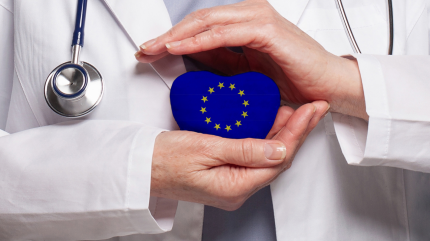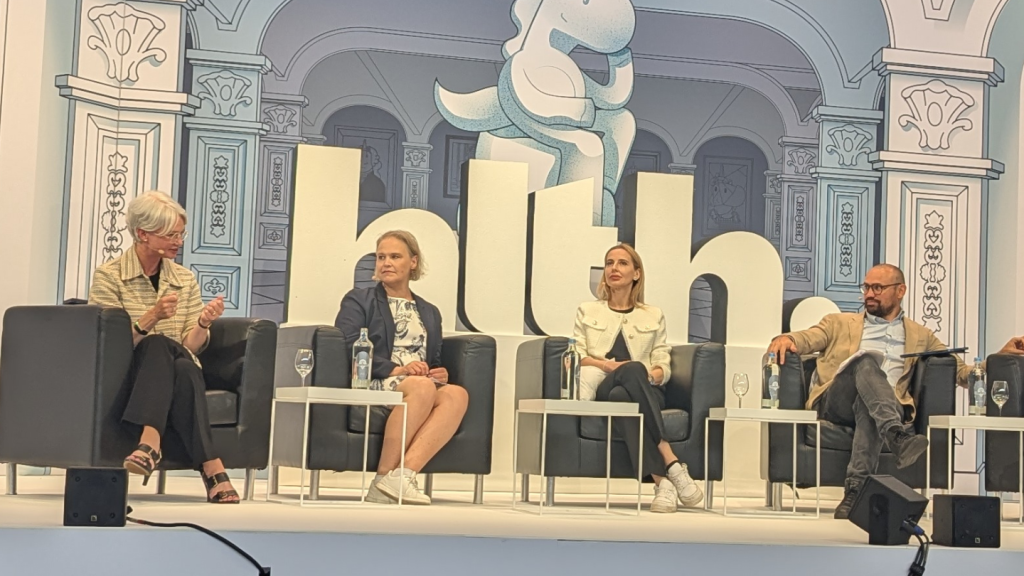
European residents must be fully informed to properly trust the incoming European Health Data Space (EHDS) regulation if it is to succeed, experts have concluded.
At the HLTH Europe 2025 conference, held in Amsterdam on 16-19 June, two panels discussed the EHDS and how it will work in practice, but said that patients must be fully informed about how and where their data will be used.

Discover B2B Marketing That Performs
Combine business intelligence and editorial excellence to reach engaged professionals across 36 leading media platforms.
Communication between European Union (EU) member states is ongoing to finalise the details of the legislation, but at its core, the EHDS will provide a single registry of patient data from across the continent. The European Commission (EC) faces a March 2027 deadline to adopt several key implementing acts, which will lay out detailed rules for putting the regulation into practice.
The regulation came into force in March 2025; however, it has not yet come into application, with this set to happen in March 2029. This date will mark the first sharing of primary health data, which includes patient summaries, ePrescriptions, and eDispensations, across all EU states and some secondary use, including data from electronic health records (EHR), will also be shared.
In March 2031, secondary use data will be made available, including medical images, lab results, and hospital discharge reports. Other countries from outside the EU and international organisations such as pharmaceutical companies will be able to apply to join HealthData@EU for secondary use in March 2034.
Currently, patient data within Europe is managed on a country-to-country basis, which can create barriers to research. This legislation would abolish these barriers and could improve research and understanding of the prevalence and treatment of both common and rare diseases. It also means patients can easily access their health data as well as share it with health professionals across borders.

US Tariffs are shifting - will you react or anticipate?
Don’t let policy changes catch you off guard. Stay proactive with real-time data and expert analysis.
By GlobalDataTrust in EHDS is crucial
A patient is understandably going to have questions when they find out their health data will be shared across Europe and later with pharmaceutical companies. It is therefore vital that patients understand what data is being shared and how, as well as understand the control they continue to have over their data, said Karen Batoosingh, senior lead of medical affairs at Base Life Science in Denmark.

Batoosingh suggested that to build public trust in the EHDS, communications should clearly explain “what’s in it for me” from different perspectives, collaborate with patient advocates, and help patients understand how their data contributes to improving healthcare outcomes.
“Trust is something that you earn, so how we communicate what’s coming out of this directive is very important. The two key principles are going to be transparency and sharing a voice.
“There’s going to be a lot of increased suspicion around whether somebody else is benefiting from this, patients asking whether somebody is making a profit off their data. When we communicate these initiatives and the data analysis that is coming out of them, we should communicate it in a way that allows for shared voice.”
In addition, she explained that this means collaborating with patients and patient advocates when data is being used, so the patient feels involved in the process and understands the benefit of the data usage to them.
Batoosingh added: “If you do that, you will build a discourse, an engagement and one that will start to engender trust in the EHDS and also get people to not opt out, but to understand what it means and what the benefits are to them to opt in.”
A major concern is whether campaigns spreading ‘misinformation’ about the use of a patient’s data could scare patients into opting out, said Maria Bäcklund Hassel, senior adviser at the Swedish E-Health Agency.
She commented: “The worst thing that would happen is that we get big misinformation campaigns where you know people who do not know the safeguards there are in place will try to scare people to opt out, and that would be terrible and very unfortunate.”
Bäcklund Hassel also stated that communicating what safeguards are in place and educating patients about both the benefits and protections of the EHDS could help prevent some fear-based reactions, which could cause patients to opt out of the EHDS.
Patient still has complete control
An important part of the legislation is the ability for a patient to ‘opt out’, putting the patient in control of their data. Jaanika Merilo, head of digital health and care at the Ministry of Social Affairs in Estonia, said that even while opted-in, a patient will still retain full access to their data and will be able to opt-out later should they choose, which she hopes will make patients feel more comfortable to trust the EHDS and see the greater good it could offer for the research space.
“Everyone has their perspective on EHDS because it’s such a big thing,” Merilo explained. “
“For me, EHDS puts a patient in control of their data – a patient will always have their data with them, they can allow or restrict your access to any healthcare professional, and the health data travels with the patient across the border and could be available for research. It’s still a very person-centred directive, and the patient must be in control, while creating this single market where any healthcare professional from any point of Europe could offer the best care, knowing your data.”

Secondary data will benefit European research
Experts unanimously agreed that a centralised database for all EU countries would undoubtedly benefit the research space, especially with the sharing of secondary health data.
“Secondary use of data is not a nice-to-have, it’s a need-to-have if we’re going to get to precision medicine,” said Batoosingh.
As a result, it is hoped that patients, especially those with rare diseases, will agree to their data being shared, as it will help in creating digital twins to use in studies, said Malene Fischer, research director at the Copenhagen University Hospital.
She said: “The true value lies here. To have a lot of patients with rare diseases is key. My institution is working with a digital twin project, and I know a lot of institutions are working with that.
“This allows you to model a specific patient’s predicted response to a given treatment, and what kind of diseases they will get in the future. Based on that, you can model the best plan, the best treatment and the best follow-up. The more data these digital twins rely on, the more patients you can mirror and the more accurate they will become.”
Experts also emphasised that the secondary data will help with accelerating drug development cycles, making clinical trials more cost-efficient, and improving real-world insights.
“If we could use EHDS to produce huge amounts of synthetic data that companies and research projects can play around with without compromising GDPR, I think that could be a huge value and also improve EU competitiveness towards some of the other big players,” concluded Fischer.





